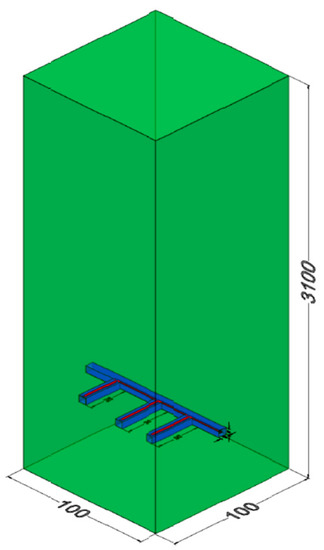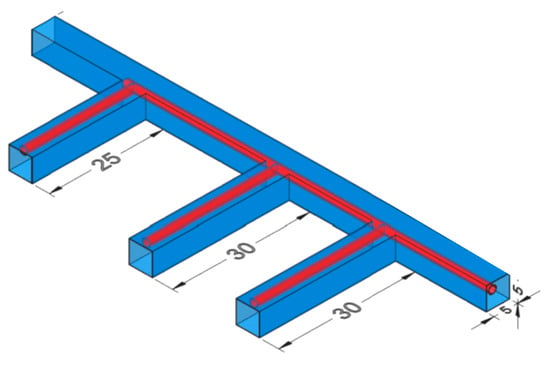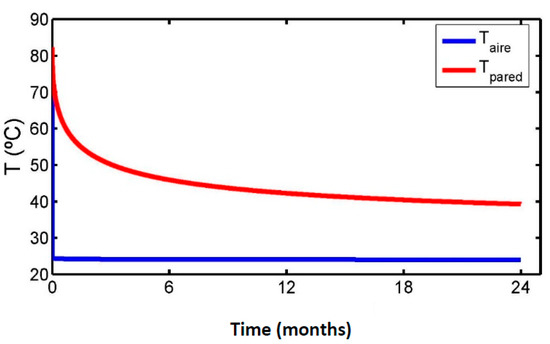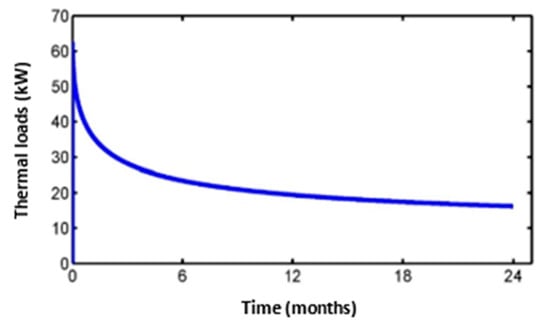Abstract
On behalf of the European Commission, a ‘critical raw materials’ list has been created, including rare materials [1] susceptible of special location and exploitation thereby their importance in the stability of global economy development and current life quality [2]. This fact, confers primary importance to Geophysics and new ore bodies operation as using of existing reserves in order to be able to supply current requirements of global production. One of the most important effects at underground environment is higher host-rock temperature triggered by geothermal gradient. In addition of this thermal loads, diesel fluxes are also important, as well as air humidity and drift ventilation. Thermal loads analysis for dimensioning cooling systems is strongly influenced by the high thermal inertia of host-rock in underground mines, which involves the appearance of long-term transient processes during the setting up.
1. Introduction
Exponential growth of global population involves a higher demand on several minerals that after its treatment and transformation satisfies comfort necessities, energy safety, technological development and needed services that supposes maintenance and improvement of life quality. These minerals are considered critical, because of their relevance for economy sustentation as per its scarcity, difficult placement and extraction. This is the reason because it’s necessary explore and develop deeper extractive production–until 3.4 km in the case of deep mines and more than 3.4 km in ultra-deep subsurface mines.
Operation at higher depth makes essential evaluate and control safety and comfort conditions in depth mines, or even produced by combustion engines during extraction. This factors makes energy consumption of ventilation systems, encharged of harmful gases dilution and keep appropriate temperature inside deep mines. This energy consumption supposes around sixty percent of total production costs [3]. This job consists on the construction of a numerical model in order to evaluate thermal loads in the galleries of depth mines, using CFD methods.
2. Heat Transfer Phenomena: Geothermal Gradient
Evaluating increasing of temperature influence inside drifts in depth and ultra-depth mines, its necessary to take in account original thermal sources, such as: heat generation associated to mechanical equipment, geothermal gradient from the core (producing vertical thermal stratification on the terrestrial crust).
Computing this influence is short out through the transient state energy equation solving at drift-host rock coupling, so the influence of ventilation/cooling system over total system behavior. According to literature, average value for geothermal gradient, , varies between 0.05–0.07 W/m2. Mathematical functions that involves computing and transient resolution for heat flows are: mass conservation, momentum and energy [3], such as:
Mass conservation (2)
Momentum conservation (3)
Energy conservation (4)
3. Description—Coupled System Drift-Hostrock
Simple subsurface galleries distribution is considered: principal drift of 25 m2 of squared section, 80 m length, and three cross cuts of 30 m, 30 m and 25 m length, equal section than principal drift. Underground red is placed to 3100 m depth respect to ground surface. Rock volume involves a squared prism of 3100 m height, and 100 m side. It’s considered a blowing ventilation system with 0.75 m2 blowing section. Two physical domains have been studied, such as Figure 1 and Figure 2:

Figure 1.
Rock total control volumen.

Figure 2.
Drift system detail.
Thermal properties for host rock are: 357 K temperature, 0.33 W/m·K thermal conductivity, 1296 kg/m3 density, and 1300 J/kg·K specific heat. Regarding the ventilation system, blowing pipes are placed 5 m to each end of drift (cul-de-sac). Blowing temperature is 298 K and 12 m/s flow velocity. It’s considered that inside principal gallery is flowing air naturally as per 1 m/s.
In addition, through wall galleries is flowing a 0.05 W/m2 heat flow, corresponding to geothermal gradient.
4. Flow Resolution in Coupled System and Findings
Geometry and boundary conditions are solved separately for each part of physical domain, using ‘pressure based solver’, transient flow, second order discretization and , turbulent model, SST. It’s necessary to annotate that flow inside ventilation tubes hasn’t be computed, just arranged stationary solution in the outlets, based on the boundary conditions listed in the previous section.
Computation inside galleries imposed boundary condition are: depth 3100 m, heat flow 0.07 W/m2 [4], surface sea level 0 m and . Also is considered, for t = 0 s, temperature is stationary and natural air velocity inside galleries and ventilation air velocity are 0 m/s.
Effect produced by cooling system air over the drift’s inner air produces, almost immediately, a rough drop of air temperature until comfort operating conditions 25 °C, while rock temperature and the rest of its domain remains at 80 °C. It’s assumed that cooling system air temperature is isothermal, although galleries walls are at higher temperature, thus computational cost is simplified, solving only energy equation. In order to calculate coupled, conduction-convection, heat transfer phenomena in transient state, it’s considered a 3600 s time-step, air velocity inside galleries 1 m/s and air velocity at cooling system blowers 12 m/s.
Behind 24 months of temperature evolution in the host-rock, it’s appreciated that Massive rock around the drifts suffers a progressive decay temperature while inside drifts air temperature is kept to 25 °C, as per Figure 3:

Figure 3.
Temperature evolution.
Thermal loads inside galleries shows up a decay tendency, can be appreciated in Figure 4.

Figure 4.
Thermal loads stabilization.
5. Findings
Flow coupled solution and heat transfer in the host-rock drift pair, is an appropriated method for thermal loads evaluation in depth underground mines.
Under analyzed conditions, a wall temperature decrease and heat fluxes through walls to galleries that is higher during first moths after cooling initiation, but after few months reaches stationary behavior.
Temperature in galleries decreases suddenly with ventilation system starting up.
However, temperature in the surrounding rock decreases slowly, due to the host-rock high thermal capacity and low diffusivity.
Host-rock works as an infinite heat source flowing inside galleries in a non-stationary process that, apparently, wouldn’t finish with a transient solution in time.
References
- Internal Market, Industry, Entrepreneurship and SMEs. Available online: http://ec.europa.eu/growth/sectors/raw-materials/specific-interest/critical_en (accessed on 24 May 2018).
- Martínez, G.E. Simulación Numérica del Fenómeno No Estacionario de Transferencia de Calor Conjugada en el par Galería-Roca Encajante en Minas Subterráneas Profundas; Technical University of Cartagena: Cartagena, Spain, 2017. [Google Scholar]
- Sasmito, A.P.; Kurnia, J.C.; Birgersson, E.; Mujumdar, A.S. Computational evaluation of thermal management strategies in an underground mine. Appl. Therm. Eng. 2015, 90, 1144–1150. [Google Scholar] [CrossRef]
- McPherson, M.J. Subsurface Ventilation and Environmental Engineering; Chapman & Hall: London, UK, 1993; pp. 526–527. [Google Scholar]
Publisher’s Note: MDPI stays neutral with regard to jurisdictional claims in published maps and institutional affiliations. |
© 2018 by the authors. Licensee MDPI, Basel, Switzerland. This article is an open access article distributed under the terms and conditions of the Creative Commons Attribution (CC BY) license (http://creativecommons.org/licenses/by/4.0/).